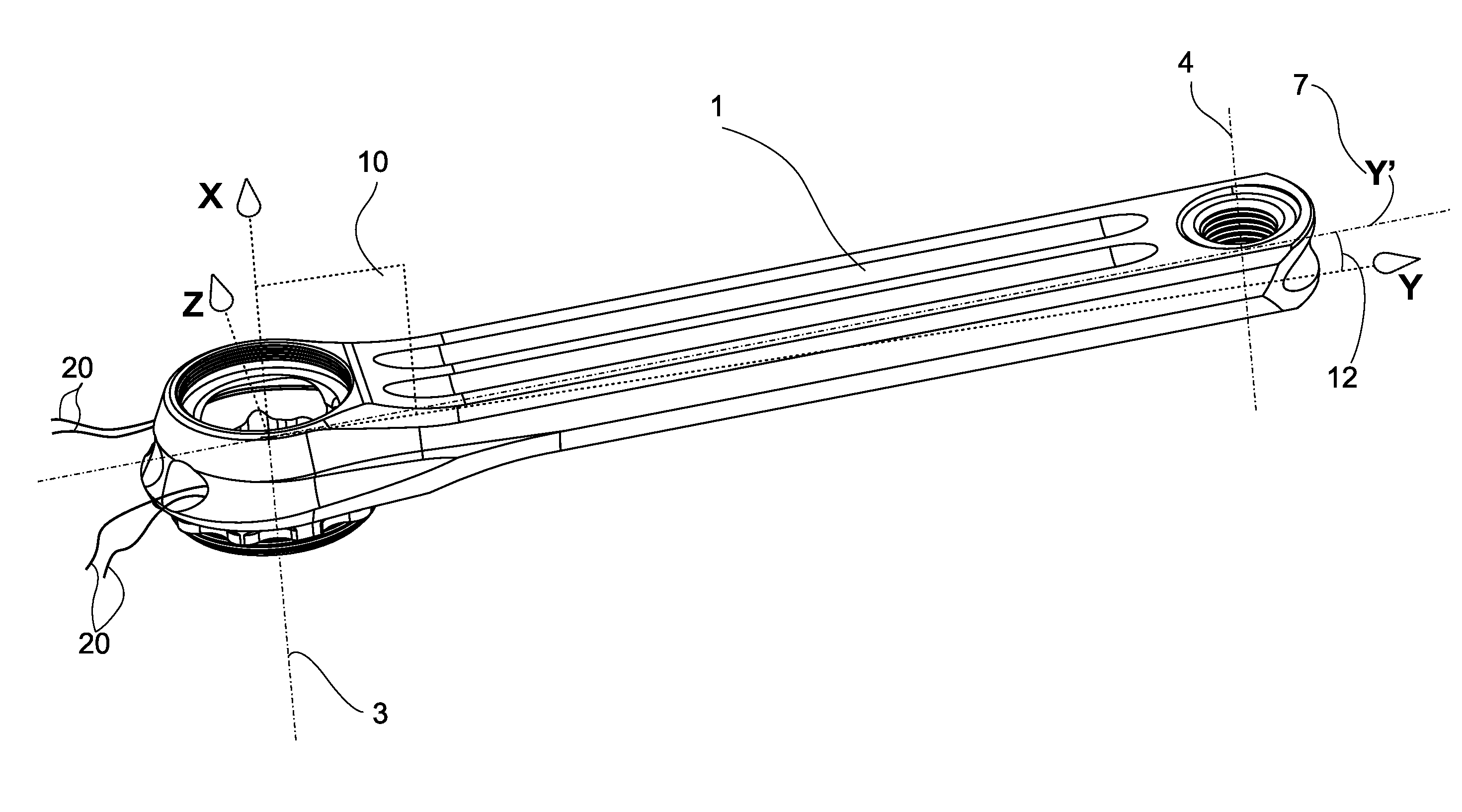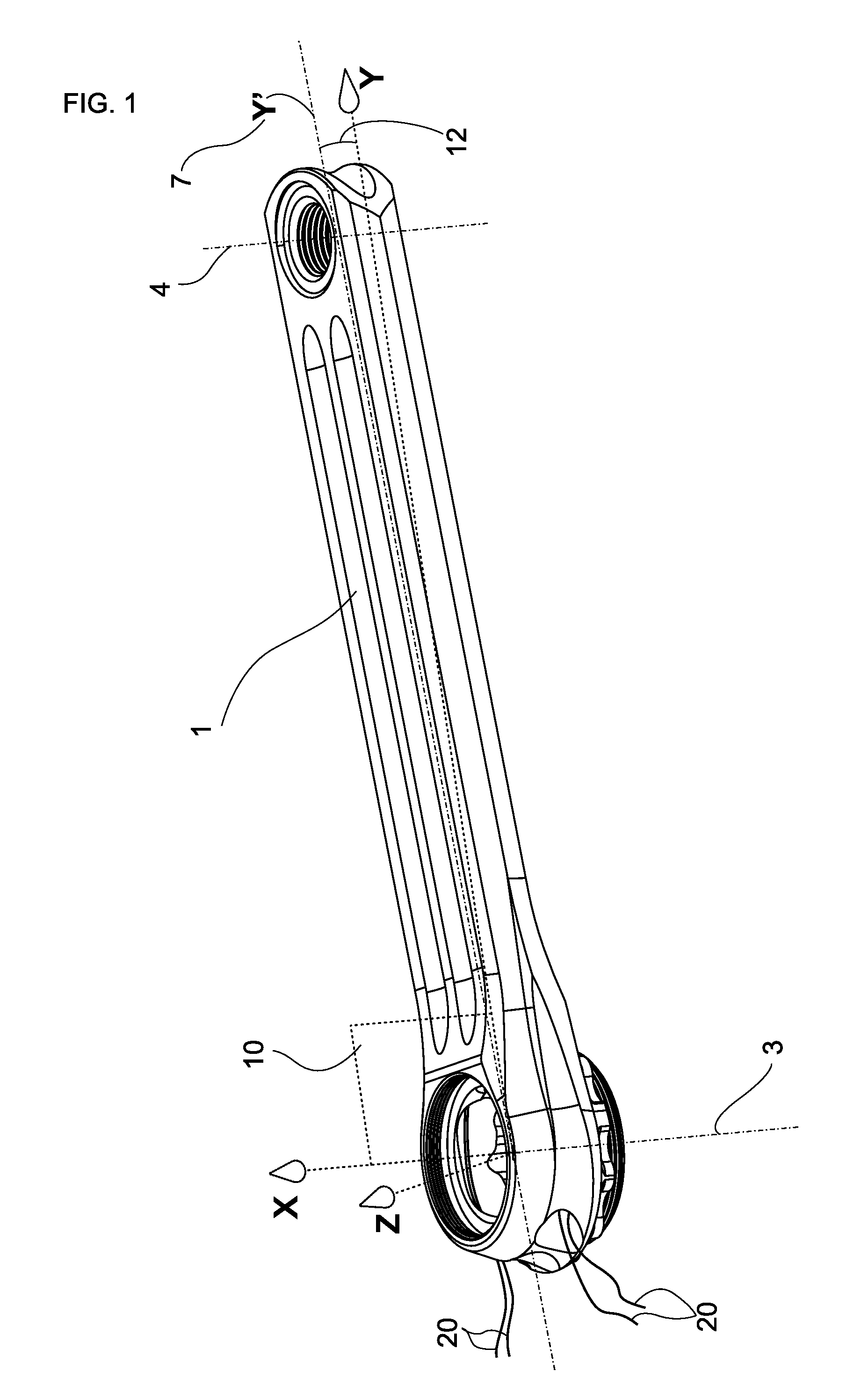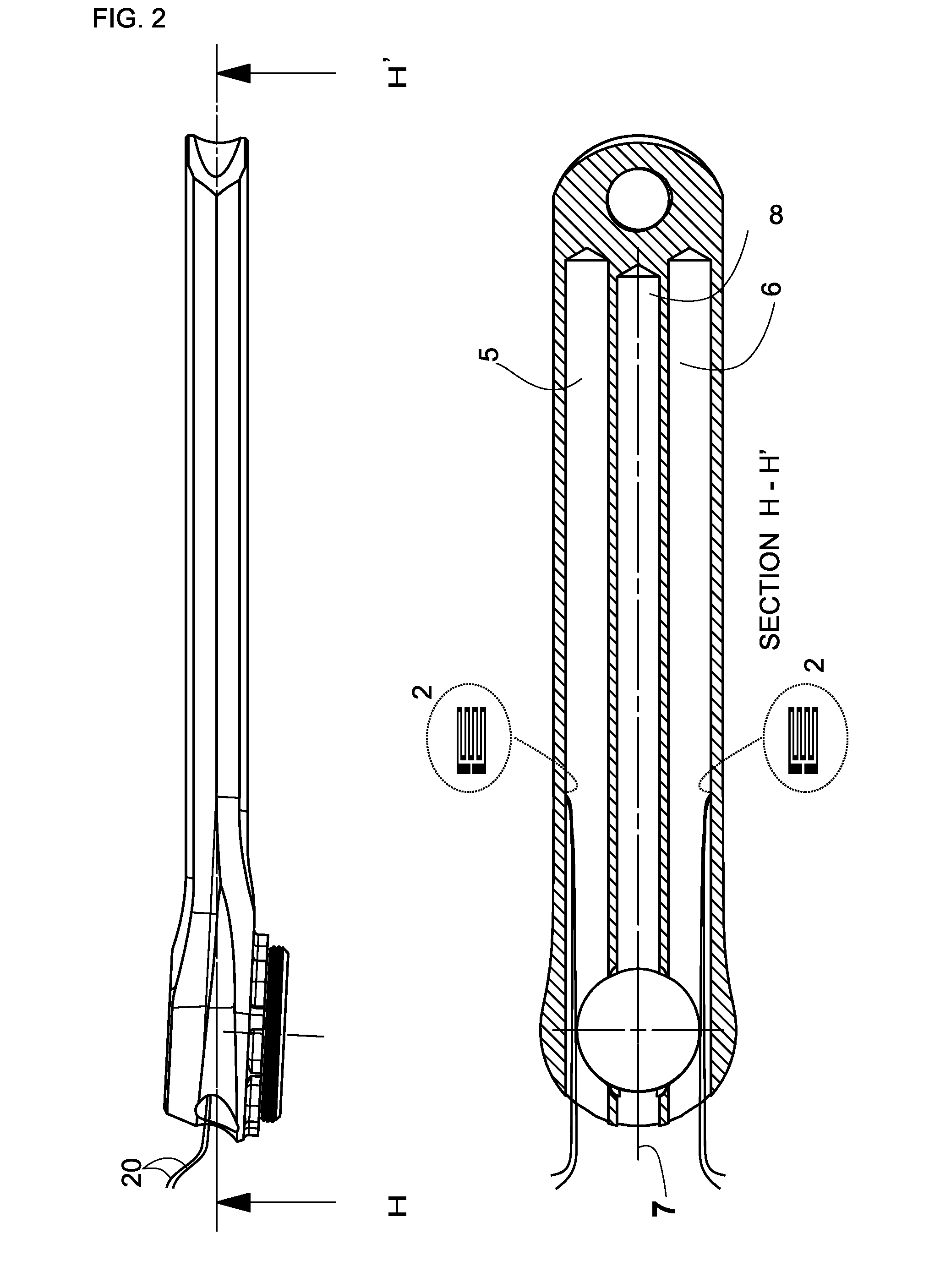Pedaling Torque Sensor Device for Each Cyclist's Leg and Power Meter Apparatus
a technology of pedals and sensors, applied in the direction of torque measurement, electric digital data processing, instruments, etc., can solve the problems of losing important information about the biomechanics of cycling, complex measurement system based on pedals, and inability to accurately measure the torque, etc., to avoid bulkiness, excess weight and volume of other setting-up, and maintain the weight and mechanical rigidity of crank arms suitable for use. , the effect of high accuracy in measuremen
- Summary
- Abstract
- Description
- Claims
- Application Information
AI Technical Summary
Benefits of technology
Problems solved by technology
Method used
Image
Examples
Embodiment Construction
[0028]A crank arm (1) is proposed which, in addition to its structural function of converting the forces exerted on the pedal coupled thereto in torque around the bottom bracket, becomes a sensor of said torque once it has been instrumented. This pedaling torque sensor device consists therefore in a special construction crank arm equipped internally with strain gauges (2), which are connected to a corresponding electronic module (30) to know its deflection in the pedaling plane and therefore directly the torque applied by each one of the cyclist's legs. In addition, we propose a power meter apparatus (40) comprising two aforementioned pedaling torque sensor devices
[0029]This pedaling torque sensor device for bicycles to measure the torque exerted in the direction of a bottom bracket axle by one cyclist's leg when operates a pedal, comprises a bicycle crank arm (1) performed in a tubular straight single-piece element, which connects said pedal with said bottom bracket, having a plane...
PUM
| Property | Measurement | Unit |
|---|---|---|
| opening angle | aaaaa | aaaaa |
| symmetry | aaaaa | aaaaa |
| angular velocity | aaaaa | aaaaa |
Abstract
Description
Claims
Application Information
 Login to View More
Login to View More - R&D
- Intellectual Property
- Life Sciences
- Materials
- Tech Scout
- Unparalleled Data Quality
- Higher Quality Content
- 60% Fewer Hallucinations
Browse by: Latest US Patents, China's latest patents, Technical Efficacy Thesaurus, Application Domain, Technology Topic, Popular Technical Reports.
© 2025 PatSnap. All rights reserved.Legal|Privacy policy|Modern Slavery Act Transparency Statement|Sitemap|About US| Contact US: help@patsnap.com



